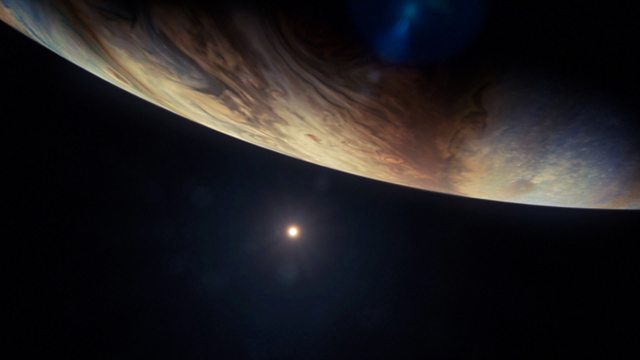The Planets episode 3 – The Godfather: Jupiter: Professor Brian Cox continues his exploration of the solar system with a visit to a planet that dwarfs all the others: Jupiter. Its enormous size gives it a great power that it has used to manipulate the other planets – a power both for good and bad that it wields to this day.
Jupiter is not only the biggest but also the oldest planet in the solar system. It alone witnessed the birth of the Sun and ever since its immense gravity has shaped the destiny of the other worlds. Soon after its birth, its orbit shifted inwards bringing it ever closer to the sun. As it moved, it created chaos in the the region of space that would become the asteroid belt, ensuring that no planet could form here, only a tiny failed planet Ceres, which remains today.
The Planets episode 3 – The Godfather: Jupiter
As it continued into the inner solar system, Jupiter used its power to throw raw material needed to form planets into the Sun, stunting the growth of Mars, a planet that might otherwise have grown as large as Earth. Indeed, Jupiter would have obliterated every last rocky world on its journey into the Sun, if a tussle with another giant – Saturn – had not brought it back from the brink.
Today Jupiter’s great mass continues to be felt. Its gravity torments its moon Io, creating the most volcanically active body in the solar system. And through the vice-like grip it exerts over the asteroid belt, Jupiter’s influence extends as far as Earth – where it retains the power to change the course of life on our planet. And where, as Brian reveals, it might even have created the conditions for humanity to inherit the Earth.
Jupiter
Jupiter is primarily composed of hydrogen with a quarter of its mass being helium, though helium comprises only about a tenth of the number of molecules. It may also have a rocky core of heavier elements, but like the other giant planets, Jupiter lacks a well-defined solid surface. Because of its rapid rotation, the planet’s shape is that of an oblate spheroid (it has a slight but noticeable bulge around the equator). The outer atmosphere is visibly segregated into several bands at different latitudes, resulting in turbulence and storms along their interacting boundaries.
A prominent result is the Great Red Spot, a giant storm that is known to have existed since at least the 17th century when it was first seen by telescope. Surrounding Jupiter is a faint planetary ring system and a powerful magnetosphere. Jupiter has 79 known moons, including the four large Galilean moons discovered by Galileo Galilei in 1610. Ganymede, the largest of these, has a diameter greater than that of the planet Mercury.




